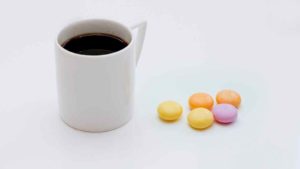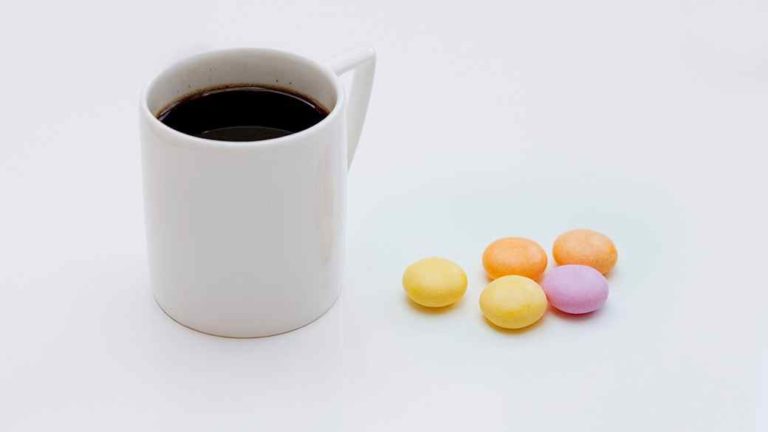Stuck for ideas for your Chemistry IA? Here is a list of 50 ideas that should hopefully inspire you to come up with an excellent IA of your own. Carl is a highly experienced Chemistry tutor who is available for one-to-one online tuition.
Edit
After being contacted by a frustrated chemistry teacher whose students were copying ideas from this list to use as their IAs, I am adding the following disclaimer:
- This is a list of ideas only, intended solely as a starting point or source of inspiration for students stuck for ideas
- Its aim is to give examples showing how different topics in the IB chemistry syllabus can be linked to real-world investigations
- It is not a list of ready-made IAs for students to copy, so do not copy directly from this list!
- Students should be aware that some of the investigations described are unsuitable because they would not meet one or more of the IB’s assessment criteria.
- Finally, student should also be aware it is their responsibility to come up with a suitable IA title of their own.
Remember also that ‘Personal Engagement’ is one of your assessment criteria, so again, don’t just copy one of these ideas!
The links are to sites or documents that give more information about the practical procedures involved.
Stoichiometric relationships
- Vitamin C content of ‘superfoods’ – Use redox titration to find out if superfoods like kale and broccoli contain more vitamin C than oranges and peppers
- The calcium content of various substances – Use EDTA titration to determine the amount of calcium in substances including tap water, milk, eggshell and limestone.
- Finding the relative molecular mass of washing soda by titration – Use acid-base titration to find out how many waters of crystallisation there are in washing soda
- Investigating caffeine content – Using colorimetry to assess whether different teas (white, black and green) contain different amounts of caffeine
- Calculating absolute zero – Investigate whether the way the volume of a gas changes with changing temperature allows absolute zero to be calculated.
- Identifying a hydrated salt – Use thermal decomposition to accurately determine the formula of an unknown metal salt
- Calculating the percentage iron in vitamin tablets – Determine the percentage iron in various tablets by redox titration with MnO4- to see if expensive brand iron tablets contain more iron than cheaper supermarket ones.
- The concentration of ethanoic acid in vinegar – Measure the amount of ethanoic acid present in various brands by titrating against sodium hydroxide to see if the concentration of ethanoic acid in different types of vinegar varies.
- The amount of aspirin in a tablet – Determine the amount of aspirin in various tablets by back titration with sodium hydroxide and hydrochloric acid to check whether the aspirin content of different tablet brands varies.
- The percentage copper in brass – Determine the percentage copper in various types of brass using redox titration using copper (I) iodide and sodium thiosulfate-iodine (iodometric titration)
- Molar volume of hydrogen gas – Use a barometric method (applying Dalton’s law) to calculate the standard molar volume of hydrogen obtained from the reaction between zinc and hydrochloric acid.
- How many moles of chalk? – Work out how many moles of chalk it takes to write your favourite poem by accurately weighing pieces of papers with chalk letter written on, then using letter frequency to calculate the total mass needed
- Experiments with hydrogels – Measure water absorption per unit time for fixed masses of hydrogel from different nappies to see whether the hydrogels in more expensive brand nappies are more effective at absorbing water.
- Investigating the Dissolved Oxygen Content (DOC) of river water – Use the Winkler ‘double redox’ method was used (Mn(II) to Mn(III), iodide/iodine) to find out if the DOC of your local rive is sufficient to sustain aquatic life
- Determining how dissolved oxygen content (DOC) in water is affected by salt and temperature – Measure dissolved oxygen content in water containing varying amounts of magnesium chloride using a Vernier probe and Winkler method to see how DOC is affected by salt balance and water temperature
- Investigating a rust remover – Use redox titration to compare the acid content of different brands of commercial rust remover
Atomic structure
- Investigating fluorescence – Investigate the fluorescence of chlorophyll and other biological pigments using spectrophotometry
Periodicity
- Factors that affect the light absorbed by a transition metal complex – Measure absorbance of light for different concentrations of copper (II) sulphate solution using colorimetry.
- Microscale reactions of chlorine – Use microscale chemistry to prepare chlorine and investigate its reactions with halides and metals
- Solubilities of halides – Use microscale chemistry to investigate the solubility behaviour of different halide salts in order to discover the trend
- Thermal stability of carbonates – Use thermal decomposition to investigate the relationship between charge density and the thermal stability of different carbonates
Energetics
- Finding and comparing the enthalpy change of combustion of alcohols – Using calorimetry to check if alcohols with more carbons in them have a higher enthalpy of combustion
- Determining enthalpy of neutralisation – Use calorimetry to see if the enthalpy of neutralisation for different acids and alkalis is always around -55 kJ mol-1
- Using Hess’s Law – Measure the enthalpy changes for the dissolving an anhydrous and hydrated salt (such as copper sulfate or cobalt chloride) in order to work out the enthalpy for the hydration process.
- Using Hess law to calculate enthalpy change – Measure the enthalpy changes for the reaction of magnesium and magnesium oxide with hydrochloric acid, then use Hess’s Law to work out the enthalpy of formation
- Investigating cooling pack chemistry – Use calorimetry to determine which endothermic reactions would be suitable to produce cooling packs based on cost and safety
Chemical kinetics
- Glow stick kinetics – Measure how the light output from a commercial light stick at room temperature varies with time in order to determine the activation energy from an Arrhenius plot.
- Which conditions denature lipases? – Investigate the effects of UV light, temperature and pH on the rate of fat digestion by lipase to see which factor has the greatest effect.
- Investigating the hydrolysis of aspirin – The effects of pH and temperature on the rate of aspirin hydrolysis
- Determining activation energy – Measure the rate of a chemical reaction at different temperatures and use an Arrhenius plot to calculate its activation energy
- The kinetics of dye bleaching – Use spectrometry / colorimetry to determine the rate law and rate constant for the reaction between some common dyes and household bleach
- Investigating the rate of reaction between sodium thiosulfate and hydrochloric acid – Use the vanishing cross method to investigate the rate of reaction between sodium thiosulfate and hydrochloric acid in order to determine the rate equation
- Catalysis of hydrogen peroxide decomposition – Monitor the rate of reaction by measuring the volume of oxygen evolve to see which catalyst breaks down hydrogen peroxide faster, manganese dioxide, liver, or potassium permanganate
- Finding a good catalyst – Use different acids to see which is most effective at catalysing the esterification of propanoic acid. Measure Kc by determining the amount of unreacted propanoic acid present using a titration to show it is not affected by a catalyst
Equilibrium
- Investigating the qualitative effect of temperature on equilibrium – Solutions containing cobalt complexes are heated and cooled and colour changes are observed to see whether the reaction is exo- or endothermic
- Determining an equilibrium constant – Use gas chromatography to measure the concentration of ester in an esterification reaction mixture over time and hence determine Kc for the reaction between propanoic acid and ethanol?
Acids and bases
- The effects of pH and substrate concentration on enzyme activity – Monitor the rate at which amylase breaks down starch into maltose at various concentrations of starch and at various pH values to find the optimum for the enzyme
- The efficiency of indigestion remedies – Measure the time taken to neutralise a fixed volume of 1M hydrochloric acid (as a model for stomach acid) for a variety of indigestion remedies (tablets, powdered tablets and liquids) to see whether liquid forms of indigestion remedies better than the tablet versions.
- Natural pH indicators – Extract the natural indicators from a variety of plants (purple peonies, red cabbage) and determine the pKa values using titration and the half-equivalence method.#
Redox
- Anodising aluminium – Investigate how factors such as voltage and electrolyte concentration effect the thickness of the oxide layer from anodisation of aluminium
- Electroplating – Investigate which factors affect the rate of electrolysis when electroplating metals and try to find the optimum conditions
- Determining K and the Gibbs free energy for a redox reaction between iron and zinc. – Measure the cell potential for a cell containing iron and zinc half cells at various temperature to see if the reaction between iron(II) and zinc metal spontaneous at 298K
- The dependence of electrode potentials on concentration – Use a voltmeter to study the relative reduction potential of various metals and the concentration dependence of voltage in concentration cells.
- Microscale electrolysis to investigate bubble overpotential – Use a microscale Hoffman apparatus to investigate the effects of voltage and bubble overpotential on the electrolysis of sodium chloride
Organic chemistry
- Alternative heating methods – Prepare simple compounds like aspirin using a microwave rather than water bath, checking purity using melting point determination
- Measuring iodine numbers – Measure the iodine number of a variety of cooking oils to determine which contain the highest proportion of unsaturated fats
- Factors effecting the stability of unsaturated fats – Investigate how light and temperature effect the stability of common vegetable oils by measuring their iodine numbers
- Fragrance compounds – Prepare different esters from the corresponding acids and alcohols and evaluate the smell compared to commercial samples.
- Microscale chemistry – Investigate whether microscale chemistry is an effective way to synthesize a drug such as aspirin
- Synthesis of a sweetener from paracetamol – Is it economically feasible to synthesise the sweetener Dulcin from paracetamol?



I`d like tot do the one on fragrance compounds but i don`t exactly understand what to do. How am i comparing it, and what do you mean by commercial samples. I`d like it if you could expatiate on the IA.
What.
what do you mean "what" ?